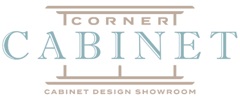
By David Mauricio, Expert Designer at the Corner Cabinet
Most clients I meet have some requirements in mind for their new kitchen they are planning. It’s typically to want an attractive, well-designed layout that will maintain quality and look for years to come. The aesthetic choices and design decisions in are an important part of the process, but the construction of the cabinets is often overlooked. First, not every cabinet line offers you a choice of construction. Therefore, when considering a cabinet line, you need to understand what their standard construction is and if construction upgrades are available. To be clear, on framed cabinets, the cabinet door and face frame that the door attaches to is made from a solid hardwood material that is typically an option for the consumer to select. The standard options are Maple, Cherry, Birch, Alder, Oak, and Walnut. The cabinet box (sides, back, and floor) and the internal shelves are either made with plywood (glued together sheets of wood) or modern particleboard, also referred to as furniture board which is a dense composite sheet made with sawdust and glued with resin.
Plywood Cabinets
Plywood box construction is considered an upgrade over particleboard and is frequently used exclusively by the higher end lines over the modern particleboard alternatives. The benefit is that plywood construction makes for a lighter (but strong) cabinet box and allows for natural wood veneer interiors which can be a desirable look over a “faux wood” laminate interior found in particle board construction. Plywood is better with fasteners such as the screws or staples used in cabinet box construction and has a reputation for being more moisture resistant. Some of these advantages are based on tradition and perception, but plywood construction is considered the gold standard of cabinet construction.
Particle board Cabinets
Modern particleboard (or furniture board) is an engineered material that can be used in cabinet construction and is the most popular type of cabinet construction outside of New England. In fact, many European lines, even the high-end lines, almost exclusively use furniture board. It is a heavier substrate than plywood and less prone to warping in longer lengths. Cabinets built with this material are heavier but when properly installed will have the same performance and durability of plywood in the long run. As a negative, furniture board construction will frequently be offered with laminate sides only, which means that a stained hardwood cabinet front (doors and drawer fronts) may not completely match or age the same as the laminate sides. This is less of an issue if you are considering a painted door style where the laminate matches tend to be much better against paint.
Many cabinet lines also offer a hybrid construction option where the hardwood face frames for the cabinet are paired with plywood sides to allow for the better finish match possible with wood veneer sides. In this case the cabinet sides only are made with plywood and the backs, top and bottoms, plus shelves are made with furniture board. This is less expensive than the all-plywood construction but is more than the most economical furniture board construction option.
With the increases in the building materials industry in the past couple of years due to supply chain issues, it makes sense to explore the available construction options and how they can impact your cabinet pricing when you are working within a budget. Be sure to ask your designer to explain your options, so you can make an educated decision that works well for your project.
